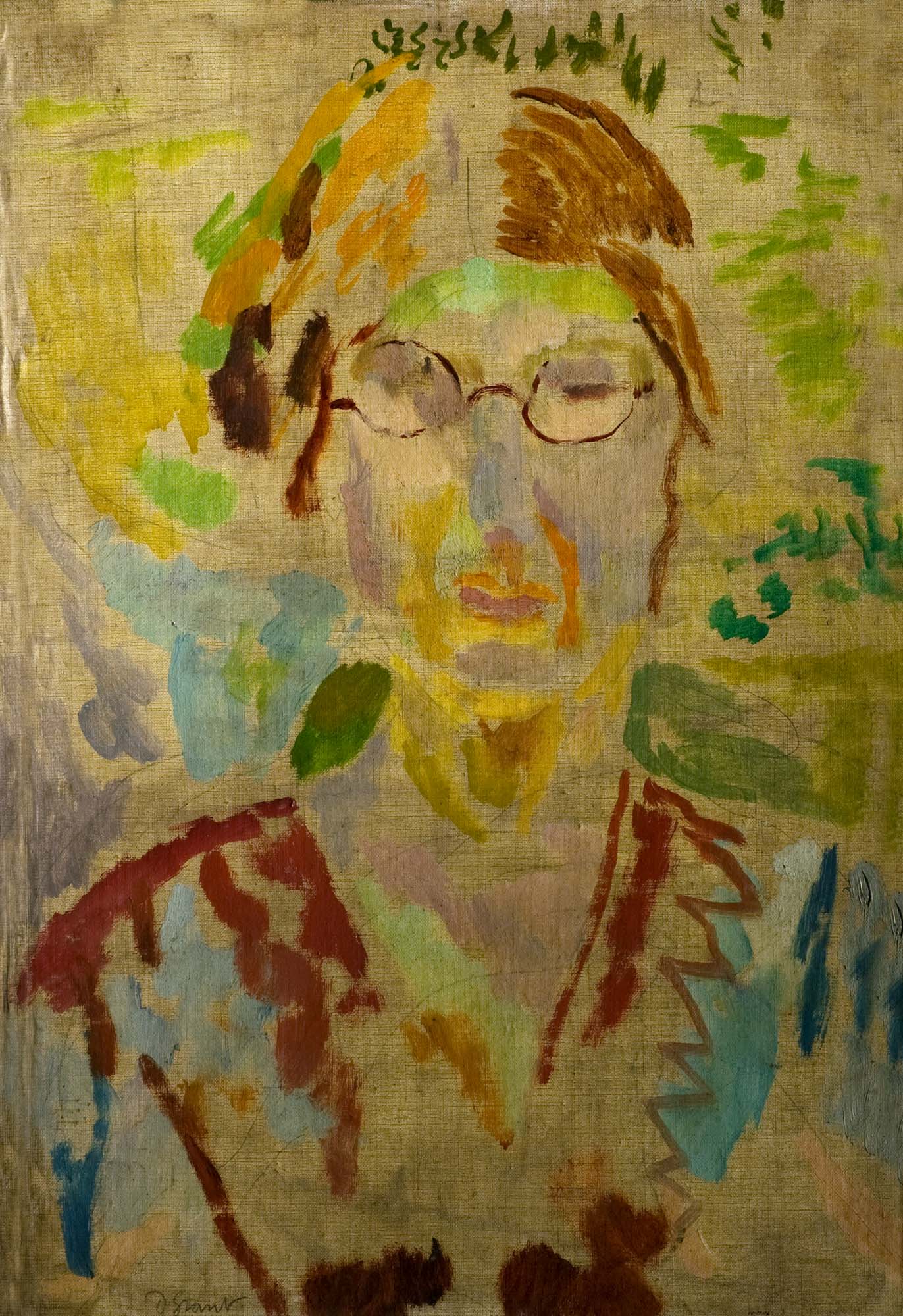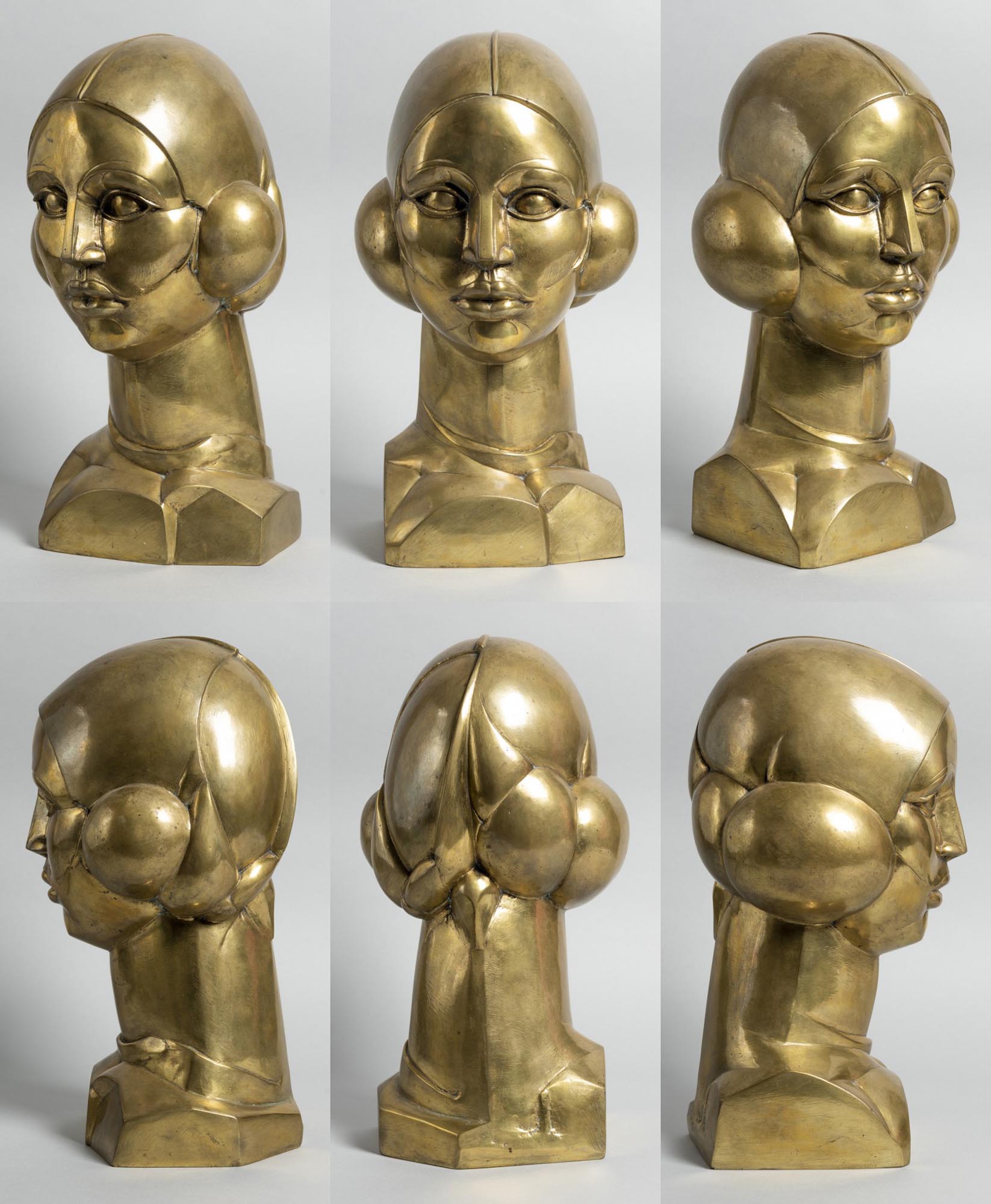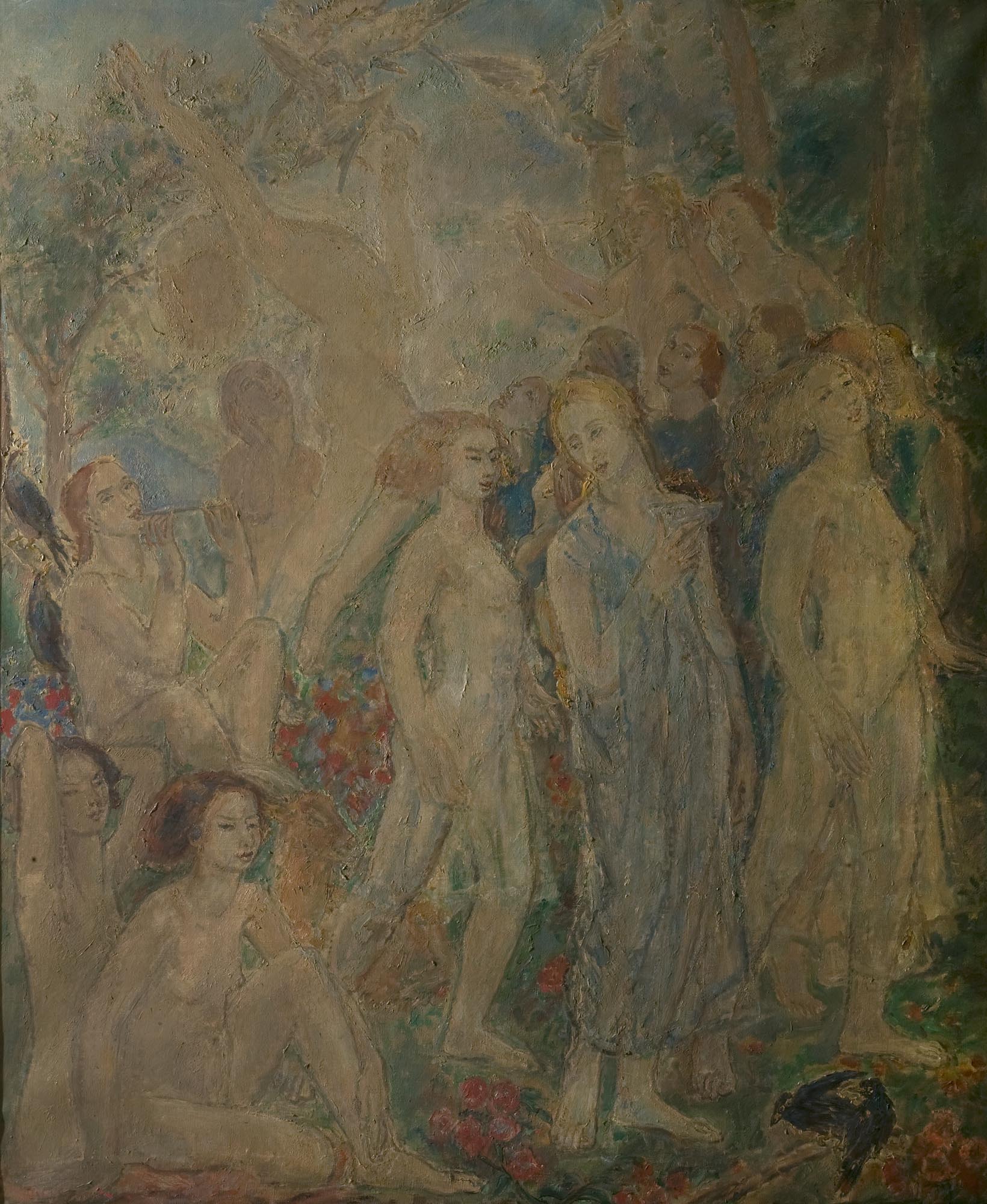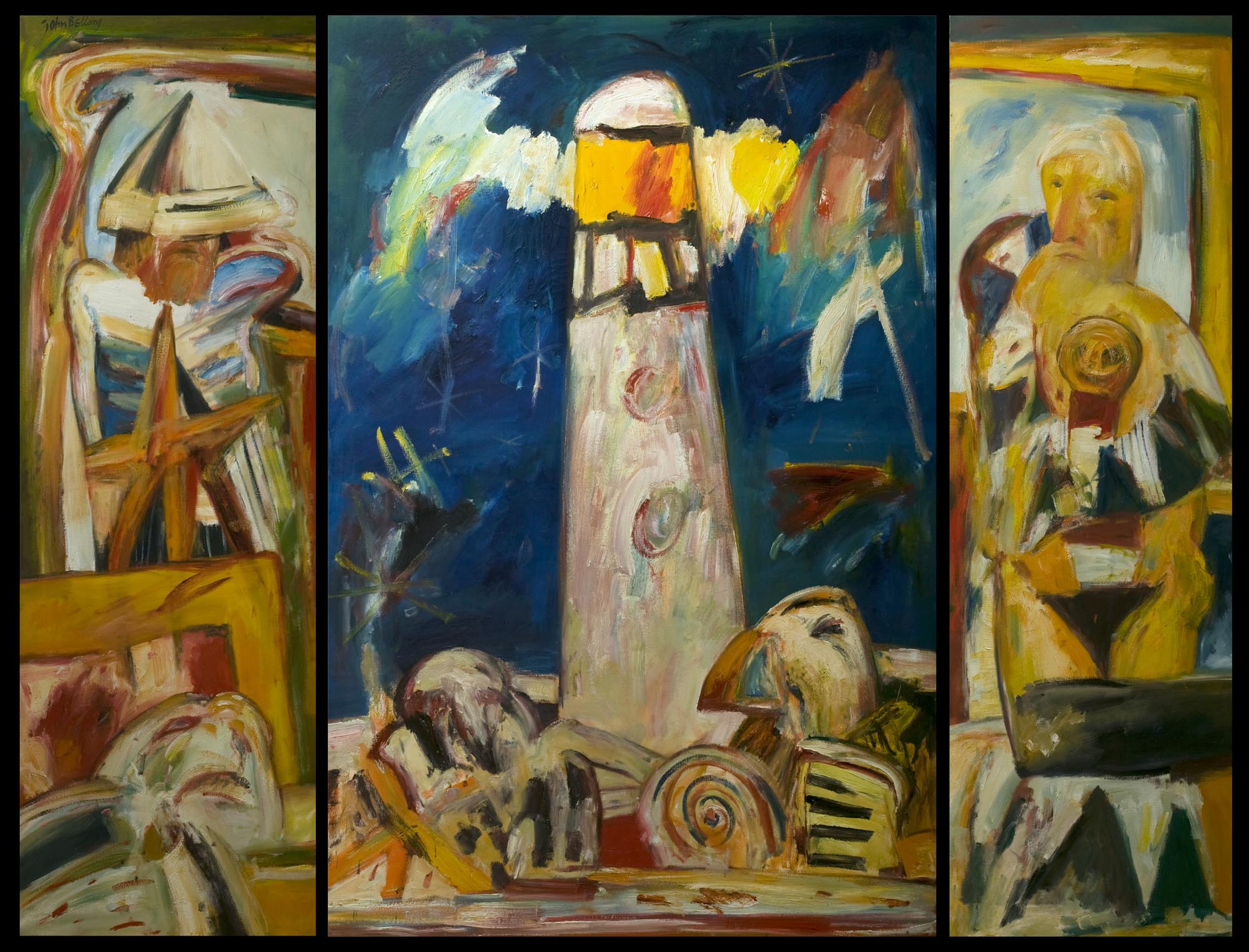Art Historian and Curator Alice Strang takes a look at Modern Scottish art in our collection.
Duncan Grant (1885-1978)
Although primarily known as a member of the Bloomsbury Group of artists, writers and intellectuals based in England, Duncan Grant was born in Rothiemurchus in the Scottish Highlands. He studied at the Slade School of Fine Art in London and at the Académie de la Palette in Paris, where he was able to see the latest developments in French art at first hand. Indeed, through the American collector Gertrude Stein, Grant met Pablo Picasso in Paris in 1912.
Six of Grant’s works were included in the artist and critic Roger Fry’s landmark Second Post-Impressionist Exhibition held in London that year. As a conscientious objector, Grant undertook agricultural work during World War One. In 1916, he moved to Charleston in East Sussex with his partner, the writer and publisher David Garnett (1892-1981), the artist and designer Vanessa Bell (1879-1961) and her husband, the art critic Clive Bell (1881-1964). Grant and Bell had a child in 1918 and lived at Charleston for the rest of their lives.

Duncan Grant (1885-1978), Portrait of Vanessa Bell, c.1914, © Estate of Duncan Grant
When Portrait of Vanessa Bell of about 1914 was purchased from the dealers Roland, Browse and Delbanco for the collection in 1955, it was believed to be a portrait of the patron and society hostess Lady Ottoline Morrell (1873-1938). However, in 2000 the sitter was identified as Vanessa Bell, the older sister of the writer Virginia Woolf (1882-1941); all three women were part of the Bloomsbury Group.
Loosely painted, with preparatory pencil markings clearly visible and much of the canvas left untouched, the work hovers between representation and abstraction. The fragile outline of the spectacles contrasts with the firm, broad application of paint elsewhere. Mark-making techniques range from zig-zags to blunt, short brushstrokes to squiggles. Loosely defined colour fields merge with suggestions of form and shadow, with painted areas sometimes touching, overlapping or maintaining planar independence. The overall effect is of raw communication, the working process laid bare in a work in which the sitter is more a vehicle of expression than an individual.
John Duncan Fergusson (1874-1961)
John Duncan Fergusson was born in Leith, the port of Edinburgh. He is one of the four artists known as the Scottish Colourists, alongside F. C. B. Cadell (1883-1937), G. L. Hunter (1877-1931) and S. J. Peploe (1871-1935). Fergusson attended Life Classes (drawing live models) at the Académies Colarossi and Julian in Paris, where he later lived between 1907 and 1913. He was elected a member of the advanced Salon d’Automne exhibiting society in 1909 and two years later was founding Art Editor of the cutting-edge journal Rhythm. Four of his works were included in the Post-Impressionist and Futurist Exhibition held in London in 1913, in retort to Roger Fry’s Second Post-Impressionist Exhibition of the year before.

John Duncan Fergusson (1874-1961), Eástre: Hymn to the Sun, 1924 (cast 1971), Leicester Museum & Art Gallery, Leicester © Perth & Kinross Council
In 1913, the dance pioneer Margaret Morris (1891-1980) came to Paris with her troupe and introduced herself to Fergusson; thereafter their personal and professional lives were interwoven, until Fergusson’s death in 1961. Due to the outbreak of World War One, he joined Morris in London where her first dance school was located and where he remained until a return to Paris in 1939. Although best known as a painter, Fergusson was also a talented sculptor. Eástre: Hymn to the Sun of 1924/71 is believed to be a portrait of Morris. The title refers to Eástre, the Saxon goddess of Spring and to one of Morris’s performances, called ‘Hymn to the Sun’.
For Fergusson, Morris embodied not only the emancipated, creative modern woman but also the primeval link between womanhood and nature, through the rhythms and movement of her choreography and dancing. The simplified forms and highly surface of the sculpture epitomise the glamorisation of the machine age, on a slightly larger than life-size scale. Fergusson made the sculpture in plaster in 1924 and kept it under his bed for three years before he could afford to have it cast in brass.
Posthumous editions were produced in 1971 and in 1991-92. Leicester’s cast dates from 1971 and was purchased with the assistance of the Museums and Galleries Commission and the Victoria and Albert Museum Purchase Grant Fund in 1981. The Fergusson Gallery in Perth is dedicated to the lives and work of Fergusson and Morris.
Ethel Walker (1861-1951)
Ethel Walker was born in Edinburgh. Her extensive training in London included periods as a mature student at Westminster School of Art and the Slade School of Fine Art. She exhibited work for the first time when she was thirty-seven years old, at the New English Art Club in 1898. Shortly afterwards she became one of the Club’s first female members.
Between the wars, Walker achieved tremendous success and status, becoming renowned for her seascapes, still lifes and portraits. She exhibited regularly and internationally, from Glasgow to Paris and Venice, including multiple solo exhibitions before they became commonplace. Many of her works were acquired for public collections, including by the Tate in 1922. She became an Associate of the Royal Academy in 1940 and was made a Dame Commander of the British Empire in 1943.

Ethel Walker (1861-1951), In the Land of Ecstasy, 1920s, © The Artist’s Estate
In the Land of Ecstasy and its companion piece The Arrival, also in the collection, were commissioned in the 1920s by the Leicestershire-born solicitor, patron and collector Henry Blackwall Harris (1871-1929) for his home at 37 Kensington Square, London. They come from a long-running series of site-specific, large-scale imaginative compositions by Walker.
The series has its roots in the fresco and tempera painting class which she attended at the Slade during the 1912-13 session, with its link to the history and realisation of mural painting. Both works measure an imposing 169 x 138.5cm and depict complex allegorical scenes involving an all-female cast of characters. In the Land of Ecstasy features several set pieces, starting with the seated nudes in the left foreground, to the central standing figures and concluding with the dancers in the background. Music and dance combine with birds, flowers and trees in the outdoor setting to create a vision of pleasure.
In the Land of Ecstasy and The Arrival were given to the collection by Henry Blackwall Harris’s brother Mr J. Montague Harris and his nephew Mr W. Harris of Westcotes, Leicester in 1955.
John Bellany (1942-2013)
John Bellany was born in Port Seton, a fishing village on the East Lothian coast. He studied at Edinburgh College of Art and the Royal College of Art in London. His father and both of his grandfathers were fishermen and his religious upbringing amidst the fishing community featured prominently in his work. An unflinching explorer human nature, Bellany investigated concepts of life and death and of the sacred and profane. Frank autobiographical references made his work highly personal and were often part of a merging of the contemporary with the presence of the past.

John Bellany (1942-2013), Lune de Miel (Towards the Lighthouse) (triptych), 1980, © The Artist’s Estate
Lune de Miel (Towards the Lighthouse) of 1980 is a monumental triptych (work composed of three parts), which features a central panel flanked by panels of half its width. This format is common amongst Renaissance altarpieces, as Bellany boldly places himself and his work within the tradition of art history.
Whilst resisting precise interpretation of his work, ‘Lune de miel’ means ‘honeymoon’ in French and Bellany made this painting the year after marrying his second wife, Juliet Lister (1939-1985). The titular lighthouse, phallic symbol of warning and protection for those at sea, sends its beams out into the night sky in the middle image. A self-portrait of the artist as puffin can be seen in a boat at its base, playing an accordion to his barely legible companion, presumably Lister. The figures in the side panels are perhaps guardians, predecessors and witnesses to the artist’s marriage. They too are surrounded by marine symbols, from starfish to skate.
Bellany’s bravura manipulation of oil paint and use of highly-keyed colours is maintained throughout the work, with a technique as expressive as the scenes it renders. The triptych is an unromanticised depiction of a tempestuous relationship which ended with Lister’s death in 1985. It was purchased for the collection with the assistance of the Museums and Galleries Commission and the Victoria and Albert Museum Purchase Grant Fund in 1982.
About the author
Alice Strang is an award-winning art historian and curator of Modern and Contemporary Art. She was born and brought up in Leicester, see her website for more information.
